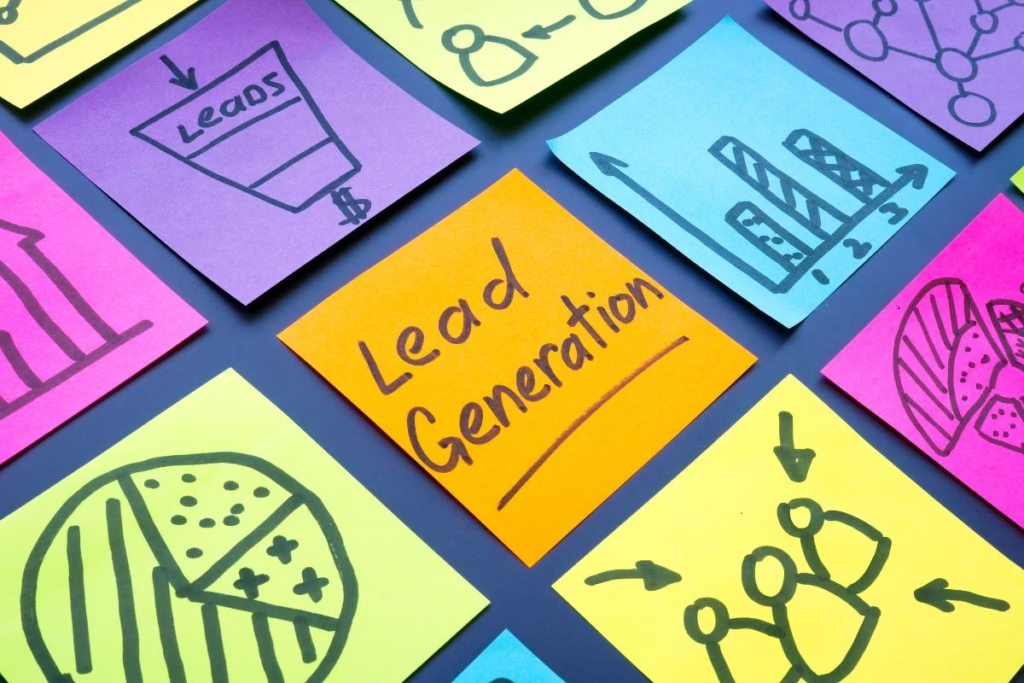Your website is more than just a digital storefront; it’s a powerful lead-generation tool that can attract potential customers and guide them seamlessly into your sales funnel. By strategically optimizing your site, you can transform visitors into leads and ultimately into loyal customers. Here’s how to make your website a lead-generating machine.
1. Define Your Target Audience
Understanding your ideal customer is the foundation of effective lead generation. Who are they? What challenges do they face? What solutions do they seek? Use this insight to create targeted content and offerings that appeal to their needs and preferences.
2. Design a Clear User Journey
Map out a customer journey from their first visit to a completed sale. This journey should be reflected on your website through:
- Clear Navigation: Make it easy for users to find information.
- Call-to-Actions (CTAs): Strategically place CTAs guiding users to the next step.
For example, use buttons like “Learn More,” “Get Started,” or “Download Free Guide” to encourage engagement.
3. Create Valuable Lead Magnets
Offer free, high-value resources in exchange for visitor information. Popular options include:
- E-books or Whitepapers
- Webinars or Video Tutorials
- Discounts or Free Trials
- Templates or Checklists
Make sure the lead magnet solves a problem or provides insight your audience finds valuable.
4. Optimize Your Forms for Conversions
Your forms are the gateway to collecting leads. Ensure they’re:
- Short and Simple: Ask only for essential information like name and email.
- Mobile-Friendly: Ensure they work seamlessly on all devices.
- Visually Appealing: Use clean design and compelling copy.
5. Leverage Landing Pages
Create dedicated landing pages for specific campaigns or offers. These pages should be:
- Focused: Stick to one message and goal.
- Persuasive: Highlight benefits and include a strong CTA.
- Optimized for SEO: Use relevant keywords to drive organic traffic.
6. Implement Live Chat or Chatbots
Adding a live chat or chatbot feature can capture leads instantly by answering questions in real time and collecting visitor information. Tools like these can also guide users further down the funnel by providing personalized recommendations.
7. Use Analytics to Refine Your Strategy
Track website performance to identify what’s working and what’s not. Tools like Google Analytics can provide insights into:
- Visitor demographics
- Pages with the highest/lowest engagement
- Conversion rates
Use this data to optimize content, improve CTAs, and test new lead-generation strategies.
8. Integrate CRM and Email Marketing Tools
Once you’ve captured leads, nurturing them through email campaigns is essential. Use a Customer Relationship Management (CRM) system to:
- Organize and segment leads
- Automate follow-ups
- Track the sales funnel progress
9. Engage Through Content Marketing
Regularly update your blog or resources section with informative articles, guides, and case studies. Quality content builds trust, positions you as an industry expert, and drives organic traffic to your site.
10. Run A/B Testing
Continuously improve by testing different website elements:
- Headlines and CTAs
- Colors and layouts
- Form designs
Measure the impact on lead generation and adapt based on results.
Conclusion
Your website is one of your most powerful tools for generating leads and fueling your sales funnel. By focusing on user experience, providing value, and leveraging analytics, you can transform visitors into high-quality leads ready to engage with your business.
Are you looking for a digital partner to help optimize your website for lead generation? Contact us today and watch your sales funnel flourish!

